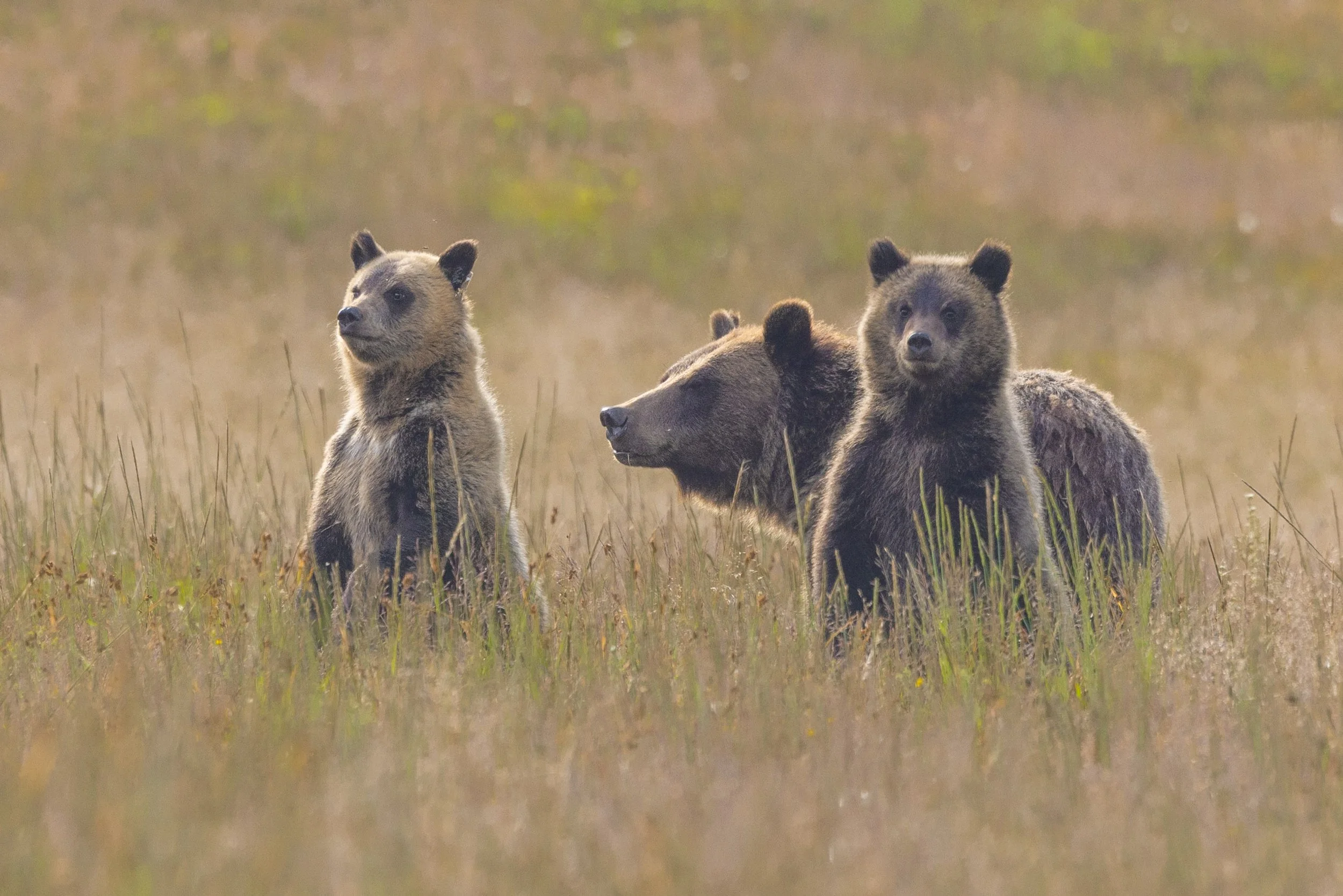
Restoring the Abundance & Diversity of Idaho’s Wildlife
From bears to bluebirds, Idaho’s wildlife is a powerful economic driver, but even more valuable for its inherent beauty, the excitement it brings to our lives, and the sense of wonder it sparks in our children.
But Idaho is growing fast and changing before our eyes. Habitat loss, degradation, fragmentation, and poorly planned development destroys valuable winter range and ancient migration routes. Management resources are spread too thin and hundreds of species are neglected.
Idaho needs to plan ahead to provide conditions for wildlife to thrive as Idaho grows and develops its economy. We need to collaborate to find solutions that give all native species the respect they deserve. This includes budget priorities—as approximately 95 percent of Idaho’s wildlife receives only 5 percent of conservation funding.
The Idaho Conservation League is a voice for all wildlife, and the ecosystems that wildlife depends upon.

ICL’s Wildlife Program
For over half a century the Idaho Conservation League has worked to protect Idaho’s unique wildlife and the diverse habitats they need to survive. In 2022, ICL refocused this effort through the establishment of a new Wildlife Program focused on Idaho’s nongame wildlife species.
Photos courtesy Ed Cannady Photography
Our long-term goal is that Idaho’s native wildlife thrive, that the full array of native species is represented on the landscape, and that those species are able to fulfill their ecological roles in Idaho.
Idaho is home to a diversity of native wildlife. Yet Idaho’s wildlife efforts are narrowly focused on animals that can be hunted, trapped, or caught. ICL’s wildlife program works to protect the full breadth of Idaho’s biodiversity, including restoring species lost from our landscapes, like bison and elusive species like wolves and wolverines. We help shape attitudes toward wildlife management and ensure the state’s wildlife management policy is based on science, not politics. We raise public awareness and support for the protection of all species, build a strong constituency of wildlife lovers, and work to find solutions to ensure that future generations of Idahoans can enjoy the wildlife heritage they deserve.
Biodiversity Crisis
Idaho’s State Wildlife Action Plan to manage at-risk species has identified almost 270 birds, mammals, reptiles, fish, invertebrates and plants that need attention. Nineteen species appear on the Endangered Species List and eight more are candidates. Alarming declines in biodiversity of nearly 70% have been chronicled in great detail. Massive reductions in bird and insect species have also captured global attention. The urgent conservation challenge we face is understanding how to stop these declines and securing conditions that allow the ecological role of each species on the landscape to be fulfilled.
Habitat Loss
Idaho is experiencing record increases in recreational use on public lands, sprawl and resource development on private and public lands, and greater demands on water resources and highways. All of this leads to historic levels of habitat loss and fragmentation. Combined with the dramatic impacts of climate change, which include more frequent and extreme wildfires, Idaho’s wildlife is finding it harder to thrive.
Quality habitat is essential for Idaho’s wildlife species to be resilient against the threats they face. More than 50% of wetlands in the U.S. have been destroyed in the last 200 years and tracts of native vegetation are continuing to shrink at unsustainable rates due to development, climate change, and a proliferation of invasive plants. Idaho must do more to maintain habitat for resident populations of wildlife and provide protections for migration corridors that allow for genetic exchange and seasonal connectivity from summer and winter ranges.
Wildlife Management
Currently, wildlife management in Idaho is disproportionately focused on game species and resources are insufficient for nongame and native wildlife—many of which have been eliminated from areas or now exist in small numbers. These rare or elusive species, such as wolverines, grizzly bear, lynx, wolves, bison, woodland caribou, sage grouse, and even wildlife like monarch butterflies, were once very common. Now, they need our help. Wildlife management must be responsive to the times and the warning signs that scientists are describing to the conservation community at large. Idahoans need wildlife custodians that make decisions based on high-quality science and not political meddling. We need to have holistic management policies in place that restore and protect the full breadth of Idaho’s wildlife, while addressing long-term threats to imperiled and other native species.
Nongame Wildlife Funding
We must work to elevate funding priorities for management of imperiled, at-risk and declining populations of nongame animals. Roughly 2% of species in Idaho are pursued by sportsmen. Yet, 97% of IDFG’s budget goes to managing those species—such as deer and elk. Due to this system of “user-based” funding sources like hunting licenses, IDFG’s wildlife diversity program for nongame species currently receives a tiny fraction of their annual budget. Conservationists of all shapes and sizes must come together to address this inequity, because assuring healthy conditions for nongame wildlife benefits all species on the landscape.








